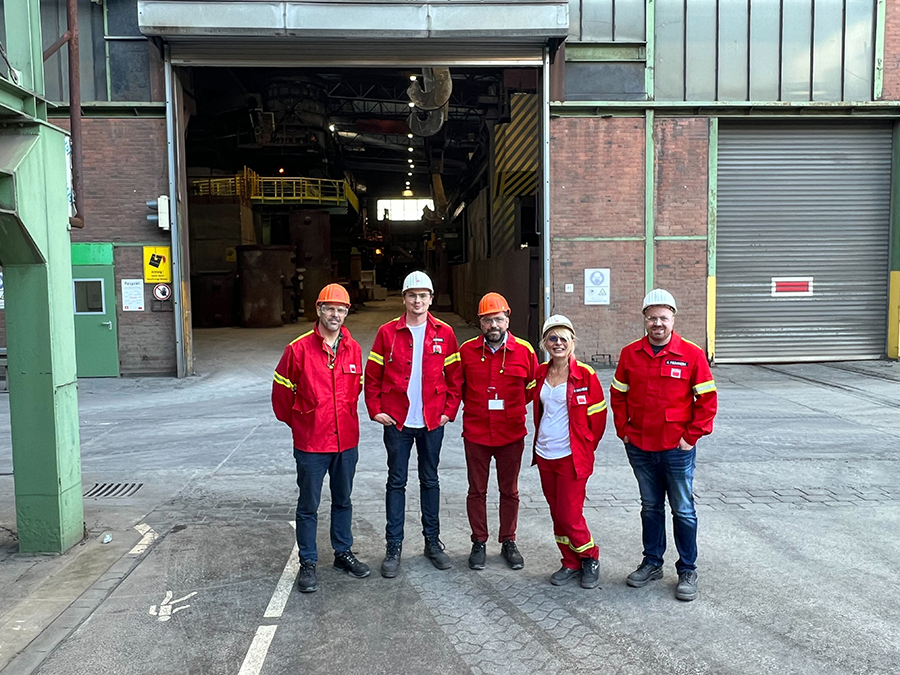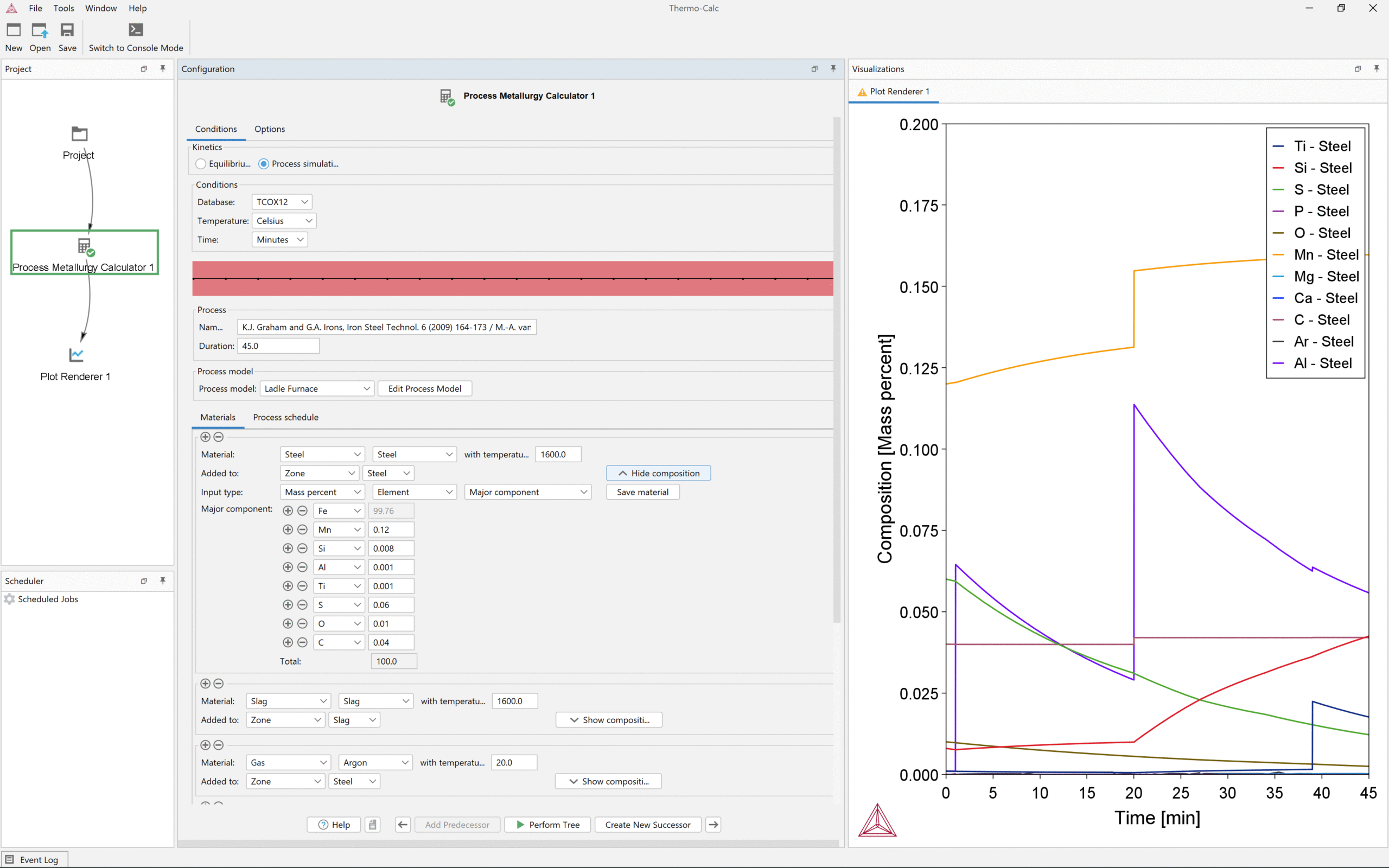After four years of work, the developed model now runs routinely in the Georgsmarienhütte plant in Germany directly using process data collected during production as model input. It performs simulations of the entire production chain in secondary metallurgy, including tapping from the EAF, ladle furnace (LF), vacuum degassing (VD), and the final treatment process (FTP). While simulations for the last two steps (VD and FTP) are available, the model calibration is still being fine-tuned.
The effective equilibrium reaction zone (EERZ) model is realised using Thermo-Calc’s thermodynamic engine, the TCOX database, and TC-Python. By using Thermo-Calc’s mature CALPHAD-based thermodynamic database, the process simulations provide realistic predictions over a wide process window and composition space, allowing reliable predictions even in cases of process deviations or production of new steel grades. Our findings to date indicate that the required model calibration is independent of the produced steel grade and limited to parameters that are hard to capture, such as possible air entrainment, furnace slag carry-over, addition burn-off, and so on. This flexibility is hard to achieve with purely data-driven approaches such as machine learning.
The model provides, for example, detailed information about the evolution of temperature, composition and amount of steel and top slag, inclusion composition and amount as well as gas emissions with high time resolution over the complete process chain. Simulation results are made available through a web-interface for a large fraction of produced heats, allowing production engineers to analyse the effects on each process step in detail and develop strategies to further optimise steel quality and cleanliness while minimising energy consumption and emissions, striving towards fully sustainable Green Steel.



